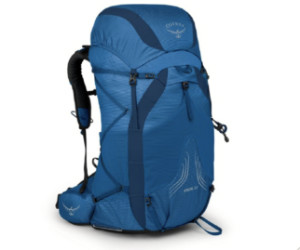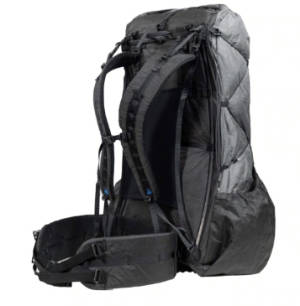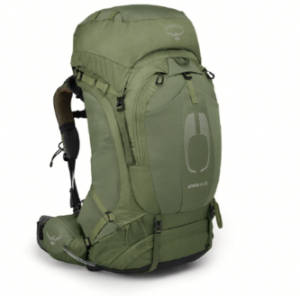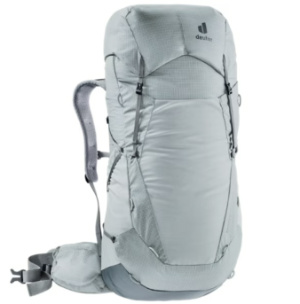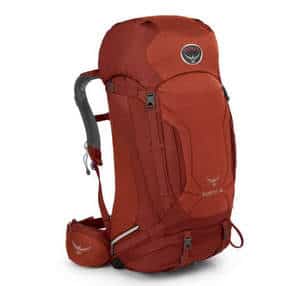A backpack with an adjustable torso length lets you change the distance between the shoulder straps and the hip belt so that most of the weight rides on your hips, making it easier to carry. Traditionally, backpack companies have dealt with torso length by forcing you to choose one of their fixed-length sizes, which may or may not fit you very well. For instance, if the torso length of a backpack is too short, all the weight will ride on your shoulders and make them sore. If it’s too long, the backpack will pull away from your back and throw you off balance. But backpacks with adjustable torso lengths give you the ability to match your exact personal measurements. It’s a lot like owning a custom-made backpack that’s made just for you, without having to pay extra for it.
Here are the 10 best adjustable torso-length backpacks we recommend. See the linked reviews for details about each.
1. Osprey Exos 58/Eja 58 Backpack
2. Zpacks Arc Haul Ultra 60L Backpack
3. Osprey Atmos AG 65/Aura AG 65
4. REI Flash 55 Backpack
5. Deuter Aircontact Ultra 50 + 5
6. Granite Gear Blaze 60 Backpack
7. Gregory Zulu 65 Backpack
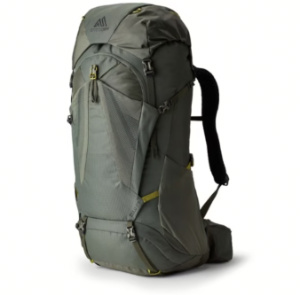
8. Osprey Kestrel 48 Backpack
9. Gregory Paragon 58 Backpack
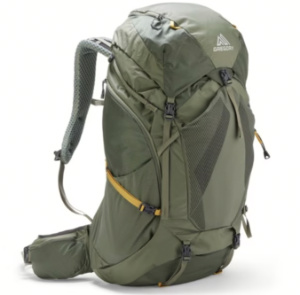
10. Six Moon Designs Swift X

How to Choose an Adjustable Torso-length Backpack
What are the most important features to consider when choosing a backpack? How important is pack weight and getting a frame or hip belt that can be adjusted to fit your personal dimensions? What is the difference between a unisex and a gender-specific backpack and why would you pick one over the other? We answer all of these questions below and many more.
Backpack Sizing
The two most important backpack sizing variables are your torso length and the circumference of your hips. Torso length is not the same as your height but measures the distance between the top of your hip bones and the C7 (bulging) vertebrae on your neck. Tall people can have short torsos and short people can halve long torsos, so it pays to measure this correctly. Hip size is not the same as waist size or pant size and should also be measured separately. Measure the circumference of your body over your hip bones, where a hip belt should rest. Do this while wearing the clothes you expect to hike in. A cloth tape measure is the best thing to use for measuring both of these numbers.
Adjustable Torso Length and Hip Belts
The majority of backpacks have fixed torso lengths and hip belt sizes, which can make getting a good fit difficult because people’s body shapes and proportions vary so much. Some premium packs let you adjust the length of these components so you can get a personalized fit. While they generally weigh a bit more, getting a well-fitting backpack is usually worth it.
Gender-Specific Sizing
Men and women have very different anatomical needs when it comes to fitting a backpack. Men tend to be taller and broader across the shoulders with squarish hips, while women have bosoms and curvier hips. Some backpack manufacturers make shoulder pads and hip belts that are gender-specific and address these differences. For example, many backpacks have J-shaped shoulder straps and sternum straps designed for men that crush female breasts. Most women prefer an S-shaped shoulder strap that curves around their chest and is more comfortable. The same holds for hip belts.
Backpack Volume
A 6o liter backpack is the sweet spot for most thru-hikers, weekend backpackers, and multi-sport adventurers because it gives you plenty of space for food, fuel, and gear. While you can go lower and higher, this is a good place to start looking, since many packs are available in smaller and larger volume models. When evaluating a backpack, it’s important to find out how the manufacturer calculates its pack volume. Some manufacturers only count closed storage while others add in all of the open pockets too. That can lead to an inflated number that you’ll regret when it starts pouring rain.
Ventilated Backpack Frames
Everyone sweats when they carry a loaded backpack. So many people prefer buying packs with ventilated frames that leave an air gap between your back and the pack to help dry your shirt faster. It’s a comfort thing.
Backpack Frames
There are basically four types of backpack frames. The one you choose will be dictated by the amount of weight you need to carry.
- Rigid perimeter frames that are internal (hidden) or external and can hold the most weight. These are required if you want a backpack that has load lifters.
- Frame stays, which are metal rods inside a backpack to keep it from collapsing on itself and prevent objects from poking you in the back. They are very lightweight and good for moderate gear loads. They can usually be removed and bent to match your back shape.
- Thin and flexible plastic frame sheets that are sewn into the back of a pack, but are not removable. They hold the least weight.
- External frames that are visible on the exterior of the backpack. They’re found on backpacks designed to carry heavy loads. They’re convenient for carrying awkwardly large gear because you can lash it to the frame and don’t have to carry it inside the pack bag.
Pockets and Organization
Different people have different styles of packing needs. Some prefer lots of pockets for organizing their gear and others don’t. Some people prefer using a hydration bladder and others prefer using water bottles, as long as they’re reachable while wearing the backpack.
External Attachment Features
Gear can be carried inside a back or attached to the outside using webbing straps or elastic cord. If you have to carry bulky or awkwardly shaped gear like a foam pad, a large tent, a packraft, paddle, snowshoes, trekking poles, an ice ax, or bear canister, it pays to get a backpack that has special straps or places that you can attach gear to.
Durability
If you plan to hike in tough desert or mountainous terrain or off-trail, it’s best to get a backpack that has as little external mesh (pockets) as possible, because these are usually the first things to get ripped up on a backpack. Zippers can also be a point of failure. Some fabrics are also thicker and tougher than others. When comparing fabric durability, those with higher denier counts (100D vs 210D) tend to be most abrasion and puncture resistant.
Check Out All of SectionHiker’s Gear Guides!
SectionHiker is reader-supported. We independently research, test, and rate the best products. We only make money if you purchase a product through our affiliate links. Help us continue to test and write unsponsored and independent gear reviews, beginner FAQs, and free hiking guides.

